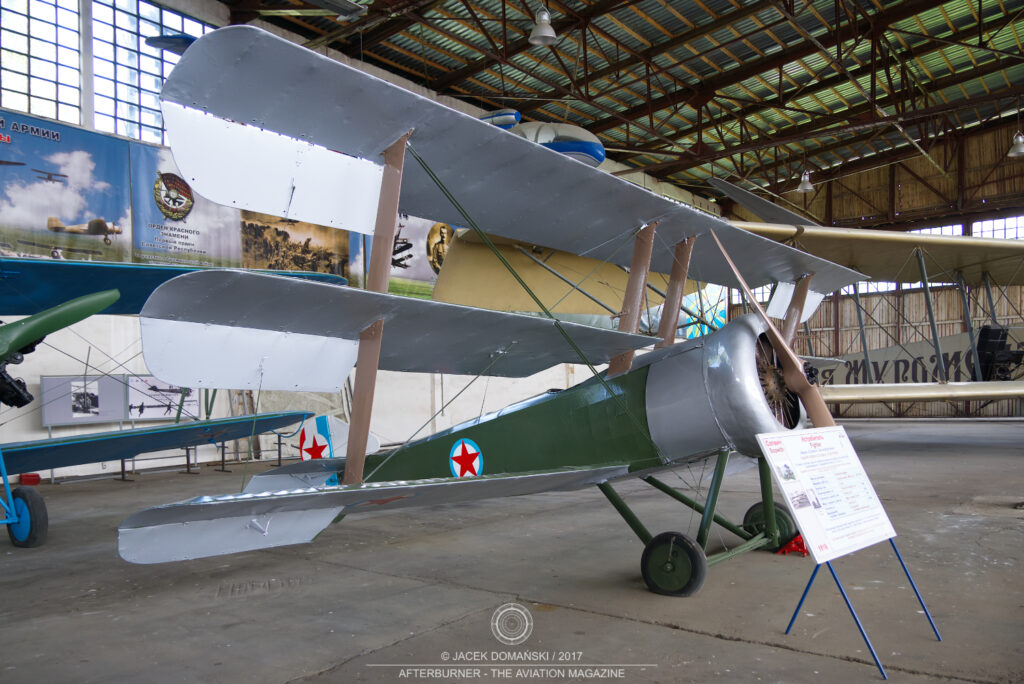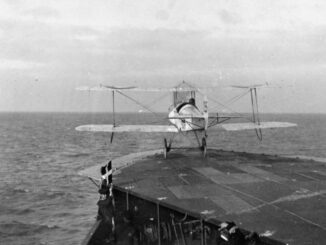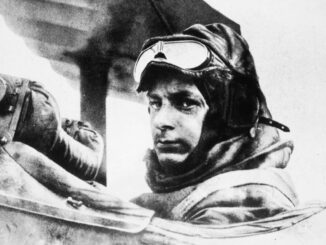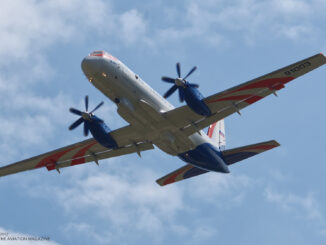 Sopwith Triplane (c/n N5486), exhibited at the Central Air Force Museum (Центральный музей Военно-воздушных сил РФ) in Monino, July 2017.
Sopwith Triplane (c/n N5486), exhibited at the Central Air Force Museum (Центральный музей Военно-воздушных сил РФ) in Monino, July 2017.
In the middle of the Great War, the Sopwith aviation company developed a single-seat biplane fighter aircraft, designated Pup. The aeroplane proved to be a very successful design, was made in almost 1,800 examples and survived as operational with the Allied fighter units until the late 1917.
Nevertheless, due to rapid development of aviation, it was sure that the Sopwith Pup fighter would be soon outclassed by new German aircraft. Therefore, shortly after maiden flight of the Pup, the Sopwith development team began to work on its successor.
An idea that sparked the Sopwith development team was soon turned into a new aviation project – the triplane combat aeroplane. Because… If a biplane was such an agile fighter, wouldn´t be a triplane even better?
The new aircraft was designed by the company experimental department, led by Herbert Smith, the creator of the Pup. It was based on previous developments of the company, such as the aforementioned Pup and Sopwith Long Range Tractor Triplane – the prototype of three-seat escort fighter.
On 28th May 1916, less than four months after the first flight of its predecessor, the Sopwith Triplane successfully performed its maiden flight. The aircraft had a wooden framework, covered with fabric, and shared most of its fuselage with the Pup. Wings of the Triplane had the same span as of its forerunner, however, due to its narrow-chord design, were about twenty squares less of the area. The prototype was powered by French-made 110 hp Clerget 9Z, nine-cylinder rotary engine. Later, when the Triplane was approved for serial production, the engine was changed to more powerful, 130 hp Clerget 9B.
Series of evaluation flights proved the Triplane really was as exceptionally manoeuvrable as promised, and also featured an outstanding rate of climb. In July of 1916 the aeroplane, armed with a single Vickers machine gun, was sent to France for testing with the 1st Naval Wing. Reportedly, just after fifteen minutes since its arrival, the Triplane was put into action and successfully intercepted an enemy aeroplane.
The second prototype of the Triplane performed its maiden flight in August of the same year. This time, the aeroplane was equipped with more powerful Clerget rotary engine, the one from 9B series, generating 130 hp. In December of 1916, the second prototype was also sent to France for evaluation in combat environment.
Its satisfactory performance convinced both the Admiralty and the War Office to place orders for a total of, respectively, 166 and 106 examples of the new Sopwith fighters. Soon after, the Sopwith Triplane officially became the first military triplane to enter operational service.
As was customary during the Great War, introduction of the new fighter aircraft meant a short but spectacular success. The Triplane outclassed most of the fighters operated by the Great Powers and commonly was considered the best Allied combat aircraft at that time. Nicknamed Tripehound or Tripe, the aeroplane was flown by several air aces, including Raymond Collishaw, Bob Little and Roderic Dallas. Collishaw, the highest scoring RNAS pilot and the second best Canadian ace, scored 34 of his 60 air victories flying the Triplane.
However, already in June of 1917, the Sopwith company introduced its further fighter aircraft, designated Camel. The aeroplane quickly became a successor of the Triplane, which started to be withdrawn from the British fighter squadrons as early as in August of the same year. The existing, but not completed, orders for Triplane aircraft were soon exchanged for the Camel and SPAD S.VII aeroplanes.
Short but spectacular service of the Triplane captured the interest of the German military. Both the authorities and the combat pilots shouted for a triplane aeroplane of the same – or even better – characteristics. This demand led to creation of more than thirty fighter prototypes in Germany which followed the Triplane configuration. One of them, officially designated Fokker Dr.I but commonly known as Dreidecker (English: triplane), performed its maiden flight on 5th July 1917 and soon became the best-known aircraft of the Great War. Flew by the greatest German air aces, Dreidecker appeared in countless number of stories and movies, quicky becoming an icon of the era. Although it was the first, the Sopwith Triplane became totally out shadowed by the Fokker Dr.I and nearly forgotten.
There are only two original examples of the Triplane that survived until today. The first is the aircraft N5912, being exhibited at the Royal Air Force Museum in London.
The second one, the aeroplane N5486 featured within our Photo of the Week series, is on display at the Central Air Force Museum in Monino, Russia. That Triplane was initially acquired by Russia in May of 1917 for evaluation purposes. The aircraft was reportedly tested in different combat conditions and finally, after the Russian Revolution, captured by the Bolshevik forces.
Further fate of the aircraft is considered unconfirmed. Some historians believe it was destroyed, and the one in museum is just a replica of the Triplane, although there is some evidence the fighter was operationally used by the newly established Workers’ and Peasants’ Red Air Fleet (Рабоче-крестьянский Красный воздушный флот) and then also for pilot´s training purposes.
The most used interpretation is, the aircraft survived and the example on display in Monino is one of the only two surviving Triplanes in the world. However, due to its complicated fate and rough service conditions, the aeroplane was reconstructed several times and it is currently impossible to say how much of its original condition was preserved.



